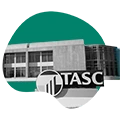In 2025, employers are navigating an increasingly complex environment when administering Family and Medical Leave Act (FMLA) in-house. Ongoing changes in labor laws, new regulatory developments, and shifting workplace demands have made FMLA compliance more challenging. The administrative load is substantial, and many organizations are struggling to keep up.
FMLA Administration Areas of Focus
In this article, we’ll explore some areas of focus for FMLA administration in 2025 that employers should know. Some of these topics have been around for a while and are even more important now, while others are part of emerging trends that employers need to understand.
Expanded Paid Leave and State-Specific Changes
State vs. Federal FMLA: Employers must distinguish between state-specific paid leave and federal FMLA leave. In some cases, employees may be eligible for both, leading to confusion about whether leave is paid or unpaid.
Tracking Multiple Leave Programs: Managing multiple leave policies (federal FMLA and state-specific paid leave) can become burdensome. Employers must ensure they are tracking the correct type of leave taken and maintaining compliance with each state’s regulations.
Recent Focus on Mental Health Conditions
Qualifying Conditions: Employers must understand that mental health conditions can now more easily qualify for FMLA leave, especially when they involve hospitalization, ongoing treatment, or significant impairment in daily activities.
Documentation and Privacy: Since mental health is a sensitive topic, employers must be careful when requesting medical documentation to support FMLA leave. It’s crucial to ensure privacy and avoid violating employees’ rights under HIPAA or FMLA regulations.
FMLA Eligibility and Coverage for Remote/Hybrid Employees
Defining Worksite for Remote Employees: Remote workers may have different worksite definitions than in-office employees, which could affect their eligibility for FMLA.
Accurate Time Tracking: Remote work can make it difficult for employers to track hours worked and determine whether an employee meets the 1,250-hour threshold. Accurate timekeeping systems are crucial to ensuring compliance.
TASC FMLA Administration simplifies compliance so you can focus on what matters.
FMLA administration continues to see evolving trends that add more complexity for employers. Staying compliant while also ensuring a great employee experience can be difficult for even veteran HR departments. That’s why more organizations are looking to TASC for help with all things FMLA and Leave Management. We offer proven compliance for employers with on-staff experts to give them the peace of mind to know that they’re covered.
Don’t let FMLA complexities put your organization at risk – partner with TASC to bring clarity to your leave management responsibilities. If you’d like more information for your organization or your client(s) on how TASC FMLA can help limit risk, reduce workload, and save time, request a proposal today!


























